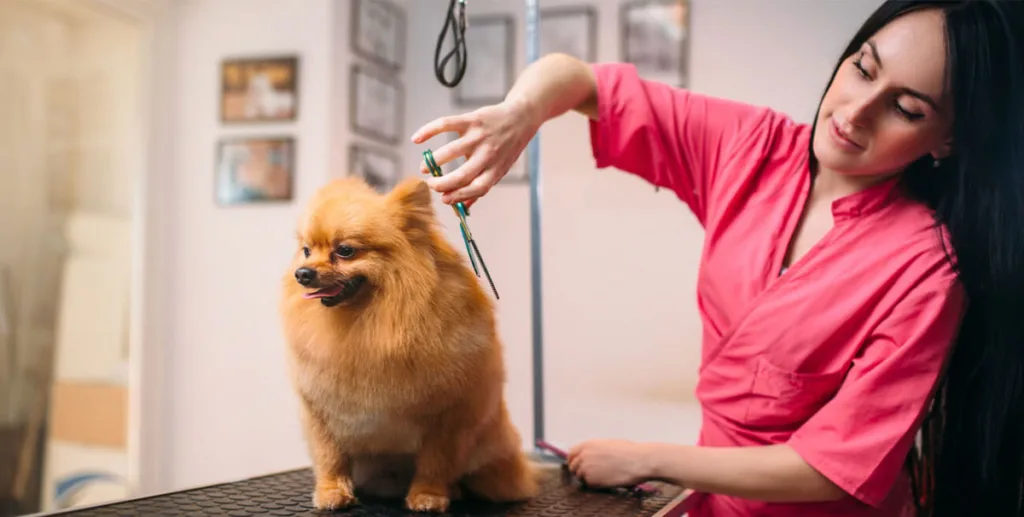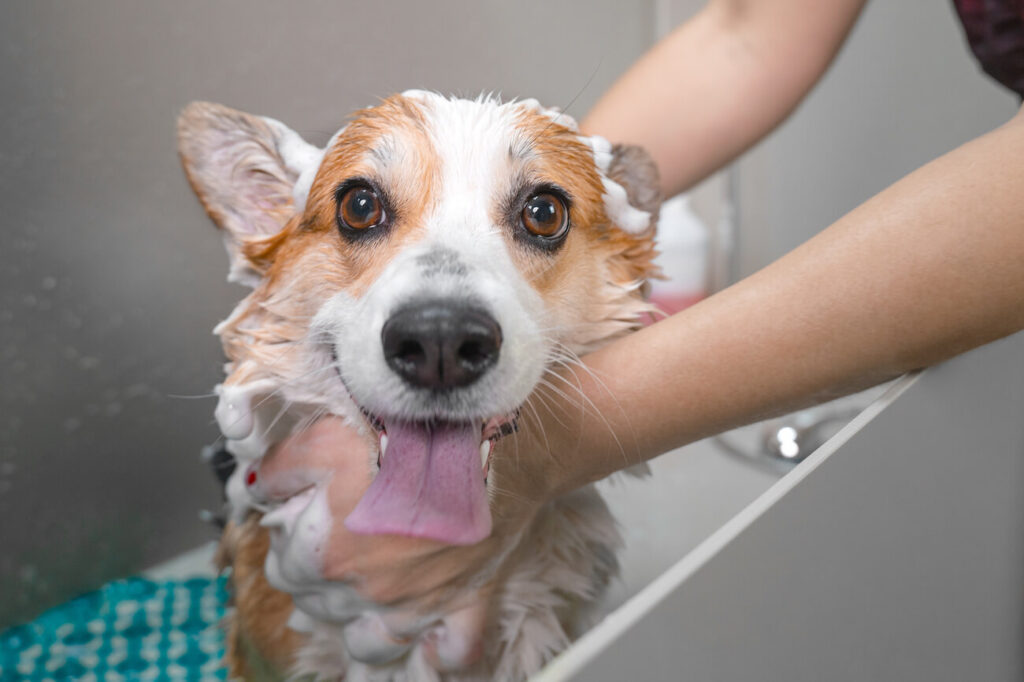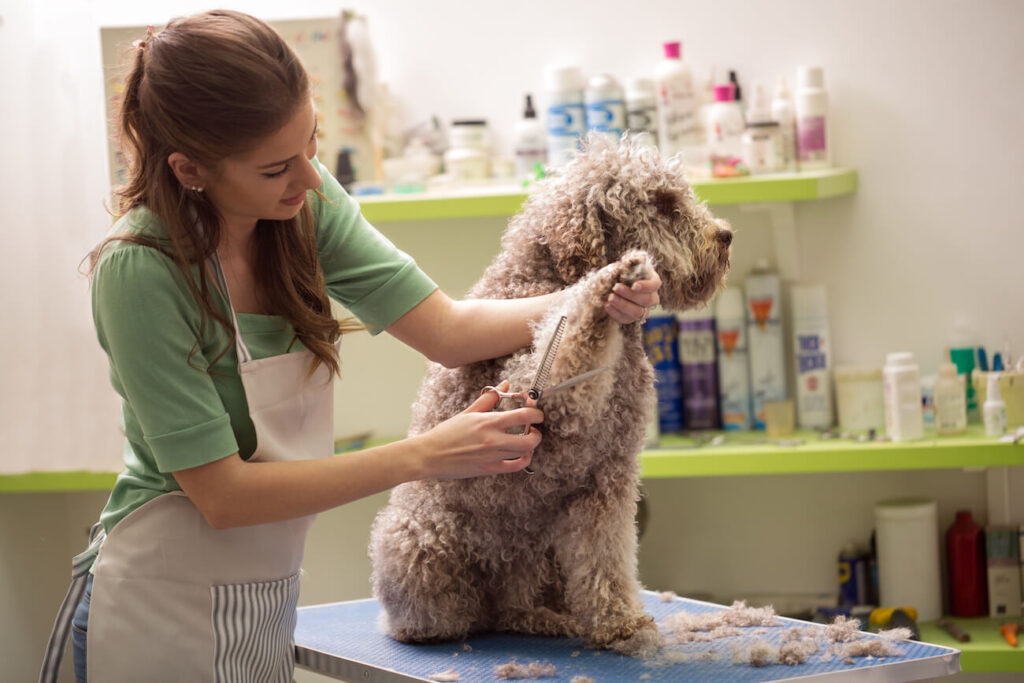How to start a dog grooming business: 9 steps to launch
Dogs are family members that fill their owners’ hearts with joy. For each puppy kiss or canine cuddle they receive, dog owners look for ways to return the love by giving their furry friends the quality of life they deserve. For many, this starts with seeking a professional groomer who can ensure their pet’s skin, coat, and nails are healthy and kept.
If you’re an animal lover and entrepreneur, now’s the time to learn how to start a dog grooming business. By 2030, dog owners are expected to spend $1,909 per dog each year—nearly double today’s average spending. And with pet ownership expected to increase by 14% within the same time frame, it’s clear that demand across the pet industry will continue to surge.

Turn your love for dogs into a successful business by learning how to set up and launch your own pet grooming business.
How to start a dog grooming business
Dog owners spend as much as $500 a year on grooming alone. When you start a small business in the multibillion-dollar pet grooming industry, you have a chance to grow a loyal customer base that regularly returns to your dog salon. Follow these steps to bring your dream dog grooming business to life.
1. Get dog grooming experience
In most states, dog groomers aren’t legally obligated to meet any licensing requirements before performing their services. However, that doesn’t mean selling your grooming services touting zero experience is a good idea.
Not all dogs are perfectly behaved at the pet salon, and even well-mannered pooches don’t always have the same type of coat or nail structure. Some dogs might even arrive at your salon with matted fur or in poor health. Professional training gives you the experience necessary to offer quality services for a wide variety of breeds and needs.
One way to become more experienced is by getting a job or apprenticeship with a local grooming salon. Once you land a position—many of which are listed on standard job searching sites—you’ll get hands-on experience with grooming equipment and a variety of pets with the guidance of a professional.
Alternatively, you can complete a certification program like the one offered by the National Dog Groomers Association of America (NDGAA). In the NDGAA program, you’ll learn about different breeds and grooming techniques and attend at least one workshop before certification testing. To receive your certification, you’ll need to take a written exam and a skills test for each of the four breed groups, including sporting dogs, non-sporting dogs, and long- and short-legged terriers. Each test costs $125-175.
Even if you plan on hiring employees to perform your grooming services, you should still be knowledgeable about the services you plan to offer. Consider consulting a professional dog groomer about their services and processes as you plan out your own operations.
2. Identify your business location

The right location can help your dog grooming business stand out. Each business type has its own unique advantages and considerations:
- Brick-and-mortar salon: A physical location can help you appear more professional and quickly become an established business in your neighborhood—it’s a solid small town business idea. While this is the costliest option and usually requires a multi-year lease, it also allows you to offer a wider variety of services without worrying as much about space limitations.
- Mobile dog grooming business: Mobile pet grooming can help you reach a wider geographic area by making services available wherever it’s most convenient for clients. However, mobile groomers don’t have a visible storefront and can only offer services if they can fit the equipment in their company vehicle.
- At-home dog salon: If you want to save cash, you can set up a dog salon in a dedicated section of your own home. Clients will travel to you instead of the other way around. Still, it can be harder to establish yourself as a professional groomer. You’ll also need to research zoning restrictions in your area relating to home-based businesses.
3. Narrow down your target market
When potential customers look for a pet grooming service, they want a business that can fulfill their exact needs. For instance, if a dog owner needs a groomer to get their pet ready for a dog show, they’re more likely to choose a business that markets itself as a show dog grooming facility rather than a standard groomer.
Narrowing down your target market will help you shape your branding and marketing in a way that speaks directly to your ideal customers. Identify who you want to sell to by listing out characteristics such as their income level, needs, and pain points. You can even target owners of specific types of dogs—for example, purebreds, large breed dogs, or curly-coated dogs.
4. Choose a business name
A great business name can make your dog salon memorable. Rather than choosing a generic name like “Pet Care Center,” create an interesting name that clarifies what you do and appeals to your target market. For instance, if you’re opening a mobile business, you could choose a name like “Rover’s Roving Cuts” or “Shear Delights Mobile Grooming.”
To avoid any legal issues, make sure your business name isn’t trademarked by a similar business using the U.S. trademark search tool. Also search your state agency website to ensure no registered businesses in the pet industry are using a similar name.
5. Select a business structure

Preparing for legalities is a must when starting a dog grooming business. To determine how you’ll be taxed and how much personal liability you hold (such as when your business is sued or defaults on a loan), you’ll need to choose a legal business structure for your company.
Forming a sole proprietorship, partnership, or limited liability company (LLC) are three of the simplest options for dog groomers. However, of the three, forming an LLC is ideal because it reduces your personal liability, so you won’t put personal assets like your house at risk if you go bankrupt. Plus, banks are more likely to lend to LLCs because they’re viewed as less risky than sole proprietorships and partnerships.
6. Register your business with your state
If you choose a sole proprietorship or partnership for your legal structure, it means you are your own business. As such, you don’t need to form a new business entity before operating. However, if you choose any other legal structure, you’ll need to register your business with your state agency (the same one you used for your business name search). You can file online or with paperwork from your agency’s website. Expect to pay a registration fee, which is usually no more than $300.
Even if you don’t need to register your business, you will need to research if any business licenses and permits are required for dog groomers like you. Your state agency, as well as your city and county governments, can direct you to the right resources.
7. Apply for an EIN
Employer identification numbers (EINs), which are tax ID numbers for businesses, are required by the IRS for any corporation, partnership, or business with employees. That said, any business owner should apply for an EIN even if you’re not legally obligated to get one. EINs are often required by lenders and for opening business bank accounts, so it can open up far more growth opportunities for your company.
8. List your startup costs
Starting a dog grooming business requires getting your finances in order. To prepare for launch, list all the expenses you need to cover before opening, as well as your expected monthly operational costs. This will confirm you’re ready to launch or uncover how much outside financing you need to acquire. Your budget can also act as a checklist as you’re shopping for grooming supplies and other business necessities.
Your startup costs may include equipment, furniture, and styling tools like grooming tables, kennels, tubs, clippers, dryers, nail clippers, and metal combs—all the supplies that will likely last you a significant length of time. Your operational costs will include recurring expenses such as business insurance, shampoo, conditioner, ear cleaning solution, gloves, and branded bandanas for new clients.
9. Market your dog grooming business
When you’re ready to open your doors, set a launch date and start marketing to your target market. Create a list of the strategies and tactics you’ll use to reach local pet owners. For instance, you can:
- Partner with veterinarians and pet stores in your area to send each other referrals
- Advertise discounted haircuts during your grand opening week on social media
- Create a Yelp Business Page complete with your contact information, hours, and high-quality photos for users searching for grooming services
Get found for free
Show up for any of the millions of customers on Yelp searching for a business like yours.

Make “dog lover” your official duty
If you’ve ever dreamed of running a pet business, starting a dog grooming business can be your opportunity to work with pups all day long. Start solidifying your business idea by getting the training you need, then choose your business location, target market, and business structure. To move closer to launch, register your business within your state and with the IRS. As you enter the marketing phase, find inspiration by researching local marketing ideas to make your dog grooming salon shine.